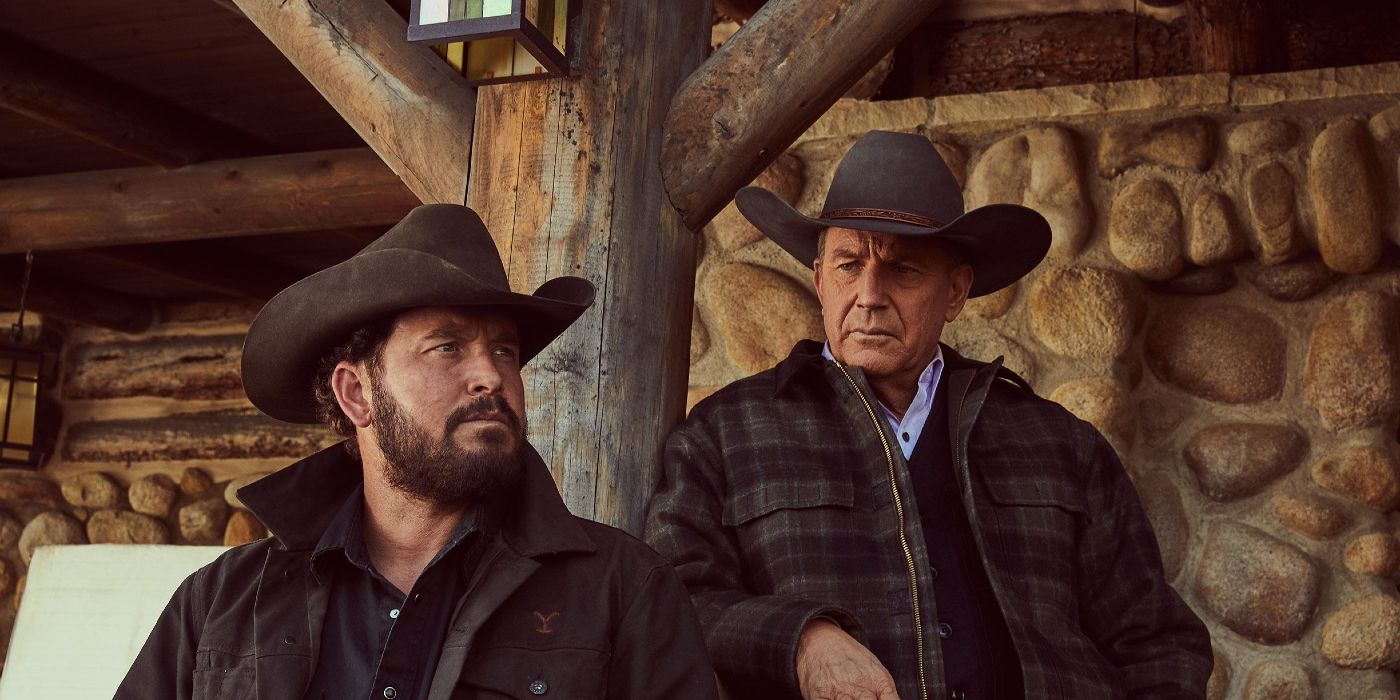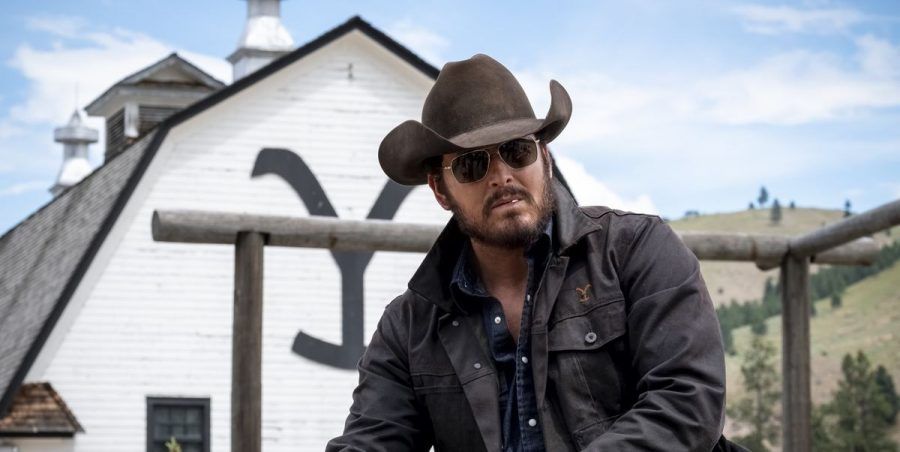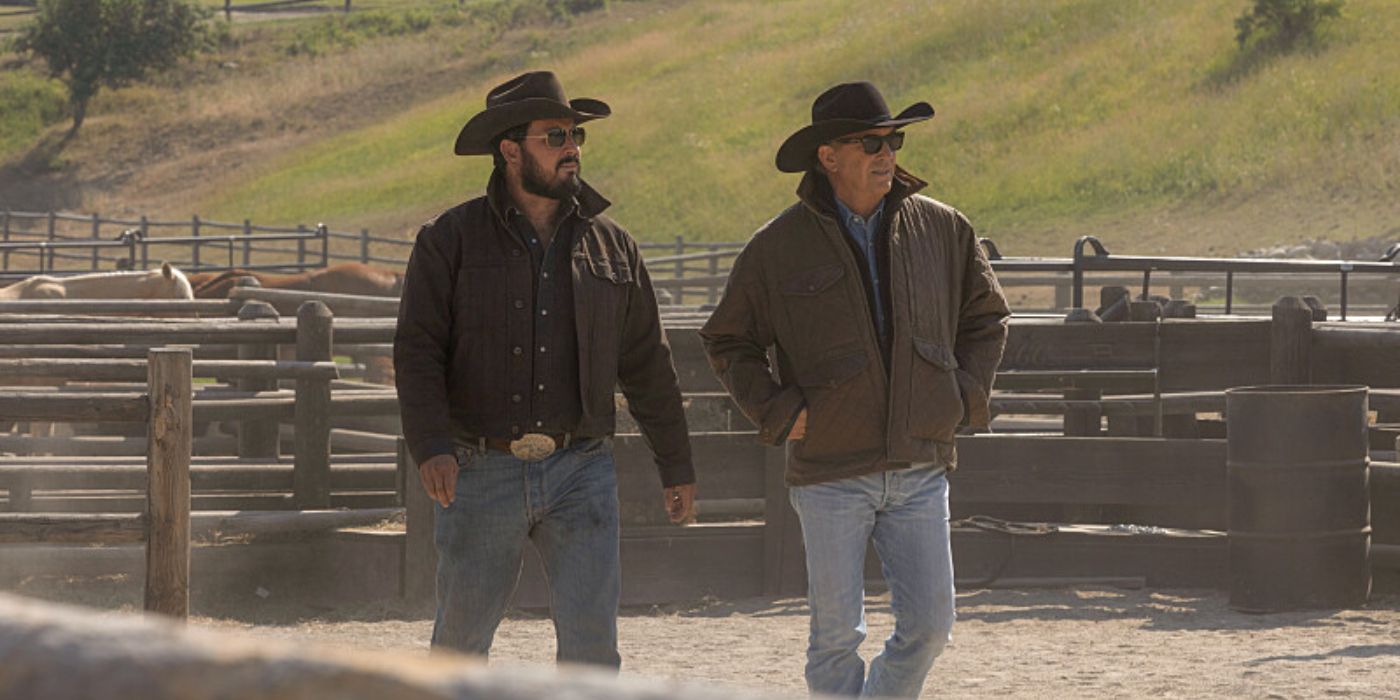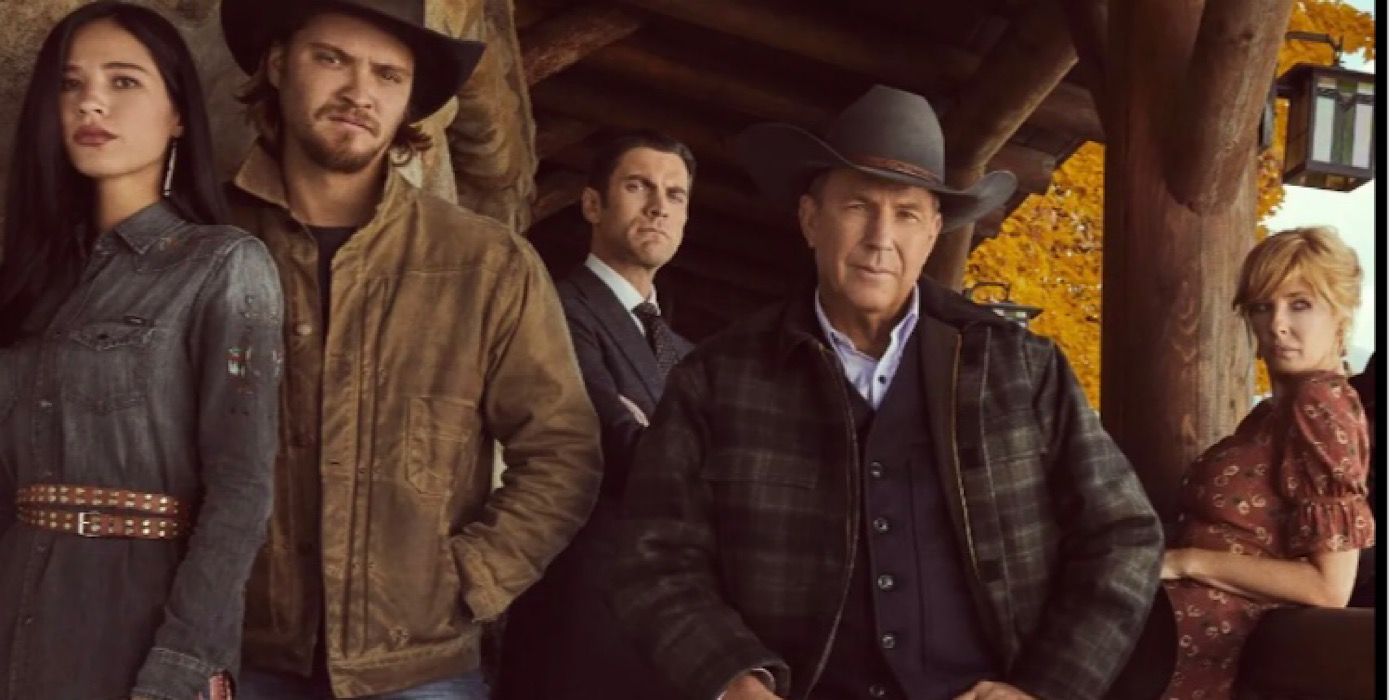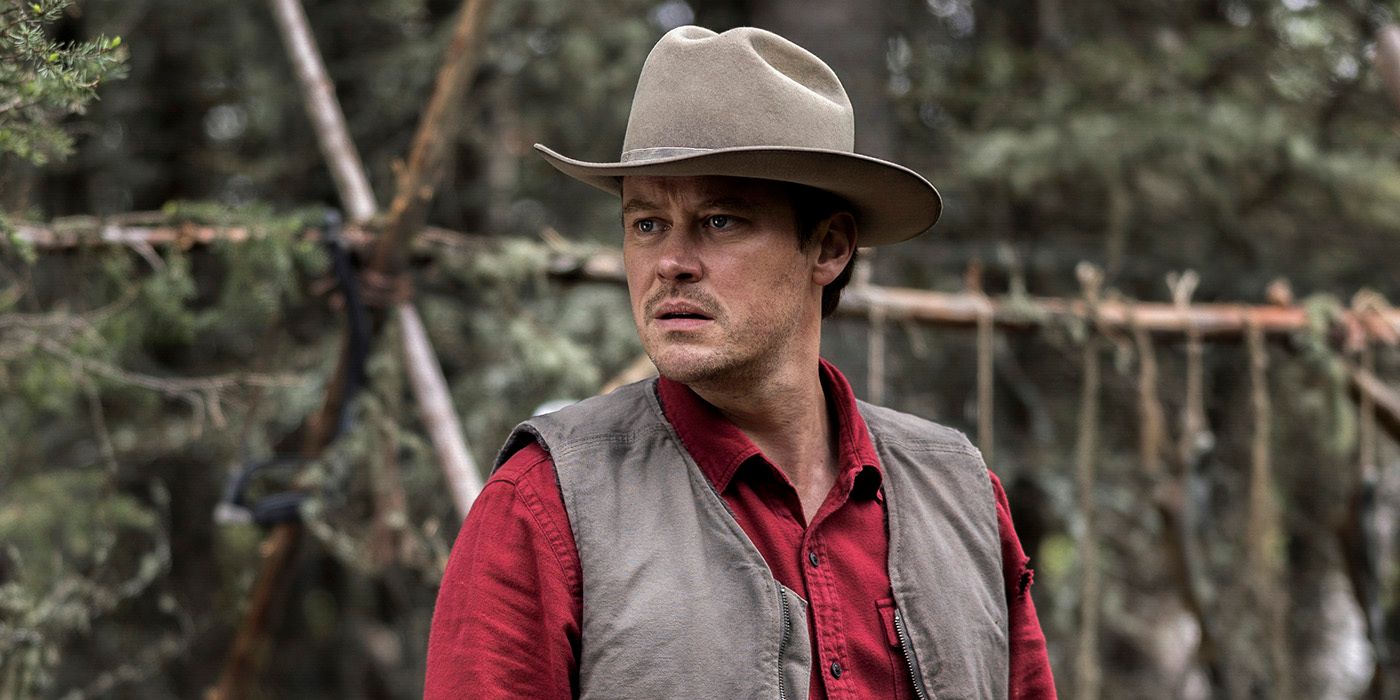Whether you watch it or not, there’s no denying that Taylor Sheridan’s Yellowstone series has dominated TV. Since launching in 2018, the neo-Western series has grown in popularity and spawned many spinoffs and prequels, including 1883, 1923, and the upcoming Yellowstone spinoff Matthew McConaughey that’s taking the place of the flagship series following Kevin Costner’s departure. There are many locations in the Yellowstone universe, but the infamous “train station” is among one of the most recurring spots, and certainly the most morbid. If there’s one place you don’t want to find yourself with someone from the Dutton clan, it’s there. As early as Season 1, Rip Wheeler (Cole Hauser) and Lloyd Pierce (Forrie J. Smith) have been dropping bodies under the cover of darkness, watching them tumble into the unknown. It’s easy to forget about all the bodies that those with the Dutton brand have hidden over the years.
As one of the biggest mysteries surrounding Yellowstone, it’s easy to wonder how a place like the “train station,” which Lloyd describes as having no people, no law enforcement, and no judges, could even exist in the United States of America. Well, if you’re one of the many to wonder about the Dutton’s own personal graveyard, wonder no further. There are answers surrounding one of Yellowstone’s biggest mysteries, answers that may shock and terrify you. Yellowstone may be a fictional television series — featuring a heavily fictionalized version of Montana — but its foundation has a basis in reality.
What Is the Train Station in ‘Yellowstone’?
On Yellowstone, the “train station” is said to exist somewhere along the Montana-Wyoming border. Not unlike how the A&E/Netflix series Longmire is set in the fictitious Absaroka County and features a fictionalized version of the Cheyenne Reservation (not to be confused with the actual Northern Cheyenne Indian Reservation in southeastern Montana), Yellowstone also creates geography that doesn’t exist. According to the series’ mythology, the “train station” falls outside any county jurisdiction, with no citizens, cops, or, well, anyone within the area’s questionable borders. It’s because of this discrepancy that the Duttons feel as if they can kill anyone and get away with it since no witnesses exist for miles around. Antagonists such as Wade Morrow (Brent Walker) and Garrett Randall (Will Patton) have both been dispatched there.
Is ‘Yellowstone’s Train Station Real?
Believe it or not, Yellowstone’s “train station” is actually based on a real-life location. While not on the Montana-Wyoming border, the real-world “train station” – deemed the “Zone of Death” – exists within the Idaho section of Yellowstone National Park. Since the park extends into Idaho, Wyoming, and Montana, the United States District Court for the District of Wyoming is currently the only district court within the U.S. to have jurisdiction over multiple states. Unsurprisingly, the federal government has complete and exclusive jurisdiction over the entirety of Yellowstone, meaning that state law doesn’t apply to crimes committed within the park. But what is surprising is that precedent for the fictional Yellowstone’s Train Station, which allows characters to get away scot-free with murder, actually does exist.
Discovered by Michigan State University law professor Brian C. Kalt, the Zone of Death is 50 square miles of land that exists within the southwestern portion of Yellowstone National Park, exclusively on the Idaho border. In 2005, Kalt wrote the essay titled “The Perfect Crime,” which theorized that this uninhabited stretch of land may be the only place in America where one could legally get away with murder. As the theory goes, because district court trials related to Yellowstone National Park are generally held in Cheyenne, Wyoming, and the Sixth Amendment to the U.S. Constitution states that “the accused shall enjoy the right to a speedy and public trial, by an impartial jury of the State and district wherein the crime shall have been committed,” this uninhabited Zone of Death in Idaho’s portion of the park wouldn’t meet the Constitutional requirements.
That’s right, because nobody lives in the Idaho section of Yellowstone, and state laws are useless when it comes to America’s First National Park, one could theoretically get away with any crime within those 50 square miles. Since no jury of peers exists within this stretch, one best be careful when entering the southwest corner of Yellowstone. Thankfully, there are currently no reported murders that should make anyone especially nervous. Regardless of a felony or a misdemeanor, “The Perfect Crime” hypothesizes that there would be no legal punishment given to those (guilty or innocent) who were said to have committed a crime within the Zone of Death. Despite the change in location, Sheridan’s “train station” had the right idea after all.
According to Atlas Obscura, Kalt published his initial findings with the intent that the federal government would do something about this massive loophole, filling it for good. Unsurprisingly, nothing has been done about it, at least in Washington D.C. Around the time Kalt’s paper was published, visitor Michael Belderrain poached an elk in the Montana section of the park. Unlike Idaho’s Zone of Death, the Montana section – notable for its Mammoth Hot Springs – is home to enough people to put together a jury, though it’s admittedly difficult given the small number of citizens. Nevertheless, the case was heard in Cheyenne, which Belderrain protested using Kalt’s “The Perfect Crime” as evidence. However, the court dismissed Kalt’s argument and Belderrain took a plea deal; the rest is history.
‘Yellowstone’ Isn’t the Only Adaptation of the Zone of Death
Although nothing has been done (at least officially) about the Zone of Death that exists at the convergence of Idaho and Yellowstone National Park, that doesn’t mean that this loophole in the Constitution hasn’t been exposed elsewhere. Western author C.J. Box, whose works have inspired the television shows Big Sky and Joe Pickett, published his novel Free Fire in 2007, highlighting this same issue. As a Joe Pickett adventure, it deals with a number of mass killings that begin taking place in Wyoming, eventually introducing the Zone of Death.
Aside from Box’s novel, the uninhabited Zone has made its way onto the screen on two occasions outside of Taylor Sheridan’s Paramount series. The first was the 2016 mockumentary film Population Zero, which used found footage to highlight a string of murders that occurred within America’s First National Park. Naturally, the film borrowed heavily from Free Fire and Kalt’s own writings. Then, in 2019, an episode of the legal drama For the People highlighted the same concept, albeit with a man murdering his wife. Of course, the most popularized version of this concept comes from Yellowstone itself, which aired the year before For the People’s “This Is America” and made the concept uniquely its own.
Somehow, it seems as if the Zone of Death is on its way to outliving Yellowstone as a Western staple. Lawmakers have been unable to convince Congress to deal with the Sixth Amendment issue, and no one seems willing to allow Idaho’s District Court any jurisdiction over Yellowstone National Park — which would immediately solve the problem. Because of this impasse, it’s unlikely the issue will be resolved any time soon, either in our world or on television. Thankfully, we live in a world where the Dutton family does not exist, relegating trips to the mysteriously train-less “train station” strictly to our TV screens.

